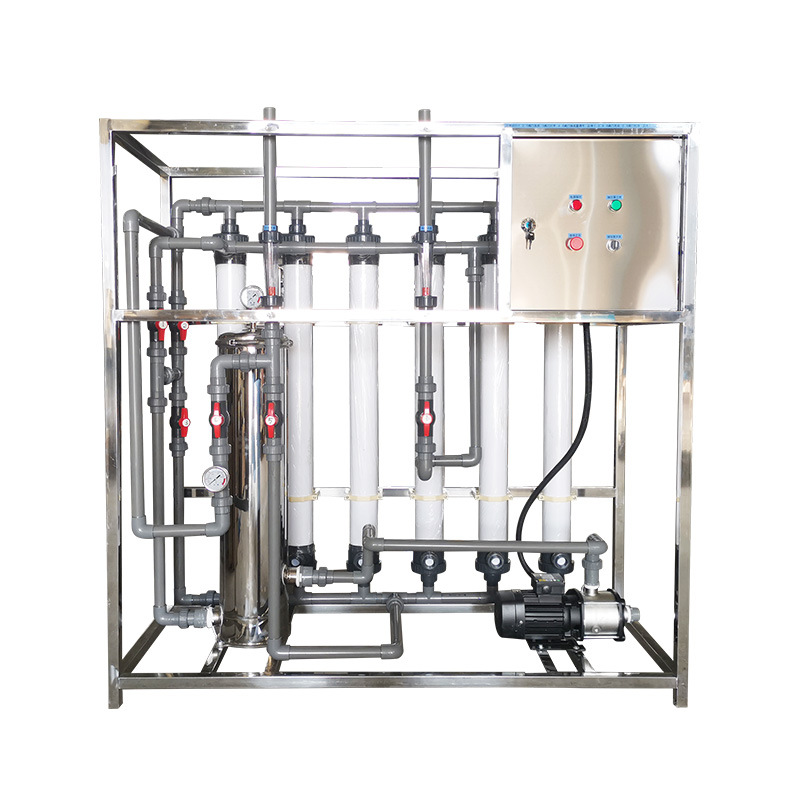RO Water Purifier principle:
The pore diameter of the reverse osmosis membrane is mostly 1 nanometer (1nm=10^-9m), and its separation objects are dissolved ions and organic matter with a molecular weight of several hundred or more.
A membrane that can only pass through solvent but not solute is generally called an ideal semipermeable membrane.
When a solvent and a solution (or two solutions of different concentrations) are placed on both sides of the membrane, the pure solvent will naturally pass through the semipermeable membrane and spontaneously move to the solution (or move from a low-concentration solution to a high-concentration solution) on both sides. flow, a phenomenon called osmosis.
Equilibrium is reached when the osmotic process proceeds to the point where pressure develops at the liquid surface of the solution to counteract the tendency of the solvent to flow toward the solution. This pressure is called the osmotic pressure of the solution.
The size of the osmotic pressure depends on the type, concentration and temperature of the solution and has nothing to do with the membrane itself.
In this case, if an external pressure greater than the osmotic pressure is applied to the liquid surface of the solution, the solvent will reverse its original osmotic direction and start flowing from the solution to the solvent side. This is called reverse osmosis. ), any separation method for concentrating or purifying solutions based on this principle is generally called a reverse osmosis process.
Reverse osmosis is the reverse migration movement of osmosis. It is mainly driven by pressure and relies on the interception of a semipermeable membrane to force the separation of solvents and solutes in the solution.
The higher the concentration of the solution, the greater the osmotic pressure value.
The pressure exerted during the reverse osmosis process must be much greater than the osmotic pressure value of the solution within the allowable range of the system and membrane strength, which is generally several times to nearly dozens of times the osmotic pressure value.
When a salt water solution contacts the surface of a porous semipermeable membrane, a layer of water molecules selectively adsorbs on the membrane's solution interface. Under the action of reverse osmosis pressure, pure water flows out through the capillary action of the membrane. And continuously flows out to form an interface pure water layer.
As for the removal of organic matter, it belongs to the screening mechanism. Therefore, it is related to the molecular weight and shape of the organic matter.
Membranes with larger pore sizes are generally used in the ultrafiltration range and are called ultrafiltration membranes. The pore size of ultrafiltration membrane is 2nm-10nm, while the pore size of reverse osmosis membrane is 0.3nm-2nm.
Therefore, RO Water Purifier filtration can better remove various bacteria, such as the smallest bacteria "Pseudomonas aeruginosa" (3000×10m), and can also filter out various viruses, such as influenza virus (800×10m). Remove pyrogens (10-500×10m).
Wastewater Treatment is effective, Environmental friendly and efficient







